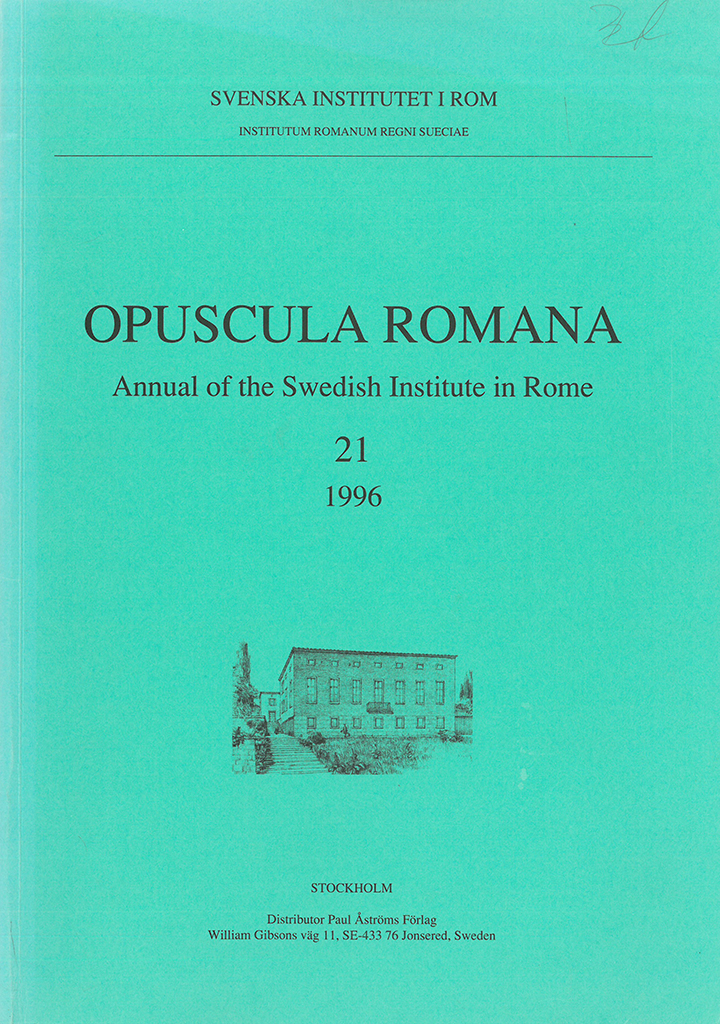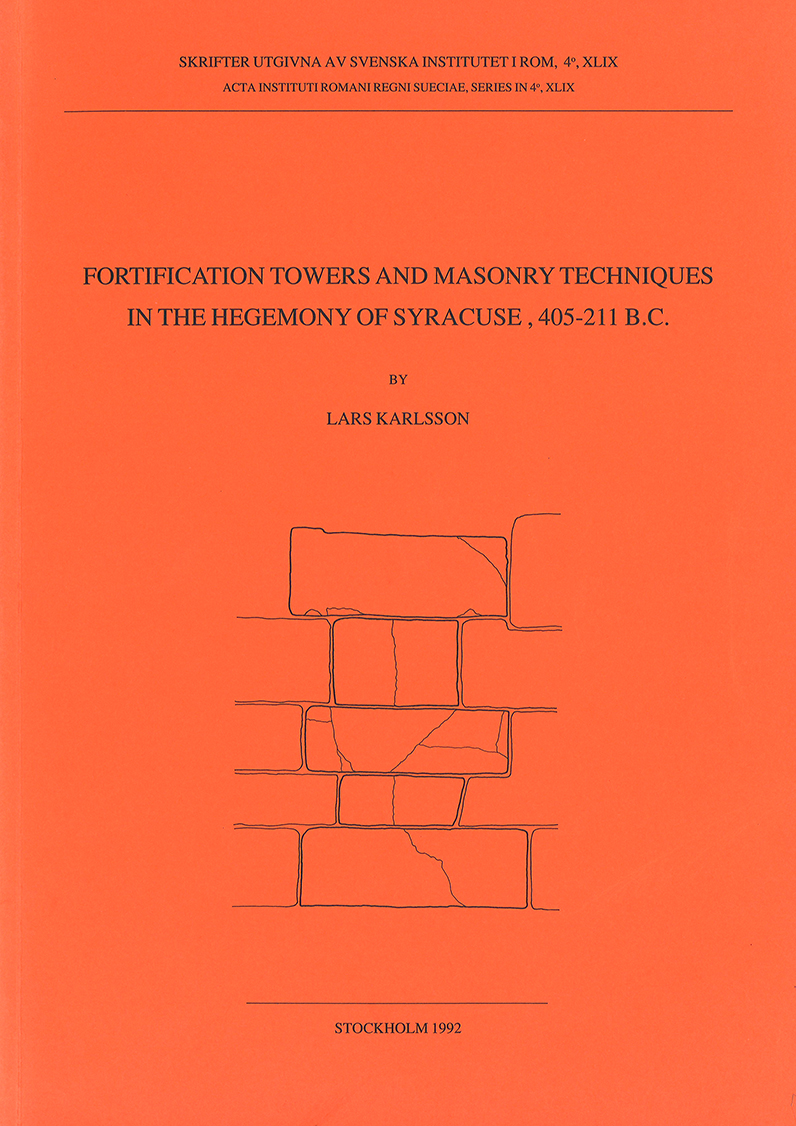Published by the Swedish Institute of Classical Studies in Rome. Distributed by Astrom Editions. Opuscula Romana. Annual of the Swedish Institute in Rome 21, 1996 Contents Gabriella Barbieri, Le necropolis etrusco-romane di Poggio Giudio e Casale Merlani presso Viterbo (pp. 7–51) Peter Danner, Bikonische Gefässe aus Chiusi (pp. 53–56) Barbro Santillo Frizell, Per Itinera Callium. Report on a pilot project (pp. 57–81) Lars Karlsson, The altar of Hieron at Syracuse. A discussion of its function (pp. 83–87) Allan Klynne & Peter Liljenstolpe, The Villa of Livia at Prima Porta. A report on the excavation of room 45 (pp. 89–100) Peter Liljenstolpe, An Ionic capital from the Villa of Livia at Prima Porta (pp. 101–105) Margareta Strandberg Olofsson, Celebration or death? Aspects of a new amphora from the Micali Painter’s workshop and the iconography of Etruscan black-figured vases (pp. 107–118) Örjan Wikander, Senators and equites VII. Matrilinear relationships and cognate nomenclature in the Roman Republic (pp. 119–124) Book reviews Allan Klynne, review of T.J. Cornell, The beginnings of Rome. Italy and Rome from the Bronze Age to the Punic Wars (c. 1000–264 BC) (pp. 125–129) Örjan Wikander, review of S.B. Downey, Architectural terracottas from the Regia (pp. 129–131) Örjan Wikander, review…
Published by the Swedish Institute of Classical Studies in Rome. Distributed by Astrom Editions. Fortification towers and masonry techniques in the hegemony of Syracuse, 405–211 B.C. By Lars Karlsson Abstract Syracuse assumed the leadership of the Greek cities after the Carthaginian wars of 409–405 B.C. and the first chapter discusses the four main periods which can be discerned in the archaeological material: (1) the rule of Dionysios I, 405–367 B.C., (2) the period of Timoleon, 244–c. 316 B.C., (3) Agathokles, 316–289 B.C., and (4) the rule of King Hieron II, 270/69–215 B.C. Pyrrhos, as king of Syracuse in 278–276 B.C., was also responsible for work on Sicilian fortifications. Towers with internal crosswalls are treated in Chapter Two and they appear in two types. The first group consists of seven towers with internal walls in the shape of a T (the ‘Epipolai Towers’). The towers are large and square, measuring 10–12 m. (around 30–35 Doric ft.) on a side. The second group of towers with interior walls in the shape of a Greek cross, is common in Sicily. Twelve square examples are known (plus two circular and two semicircular). The square towers frequently measure 6.60 m. (20 Doric ft.) on a…


